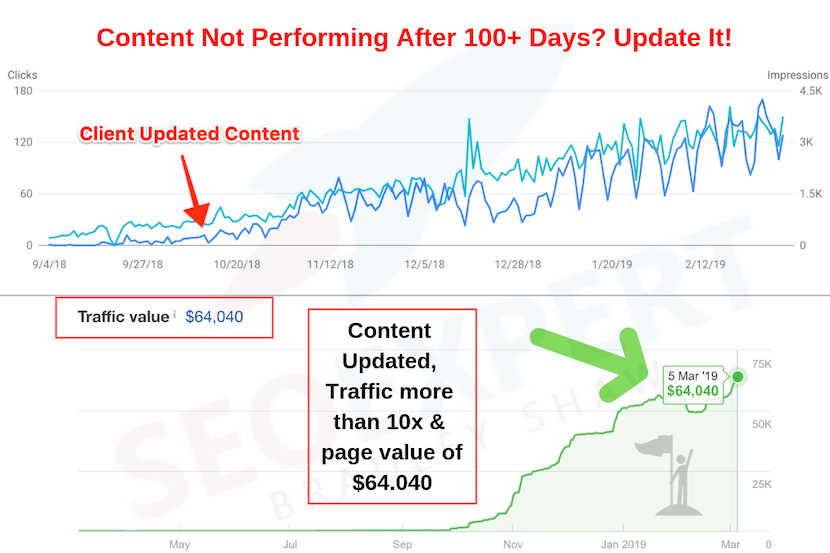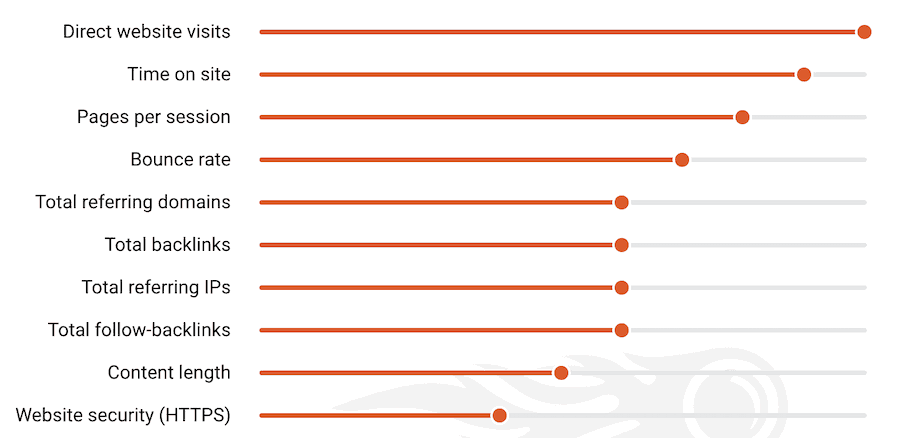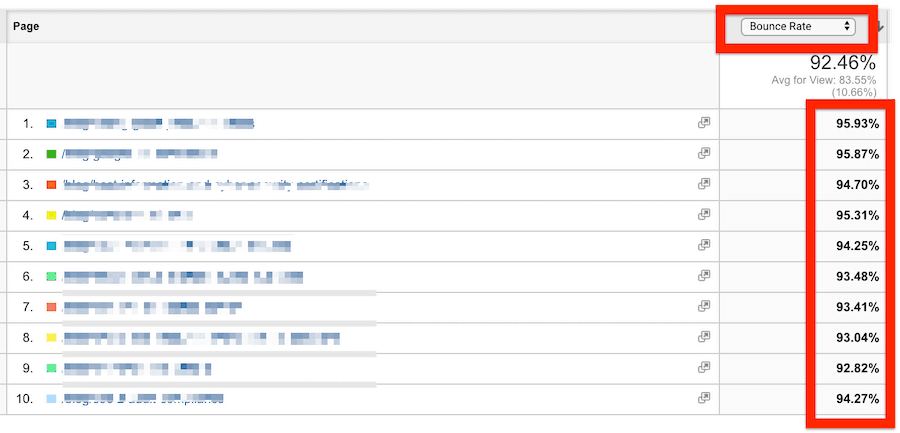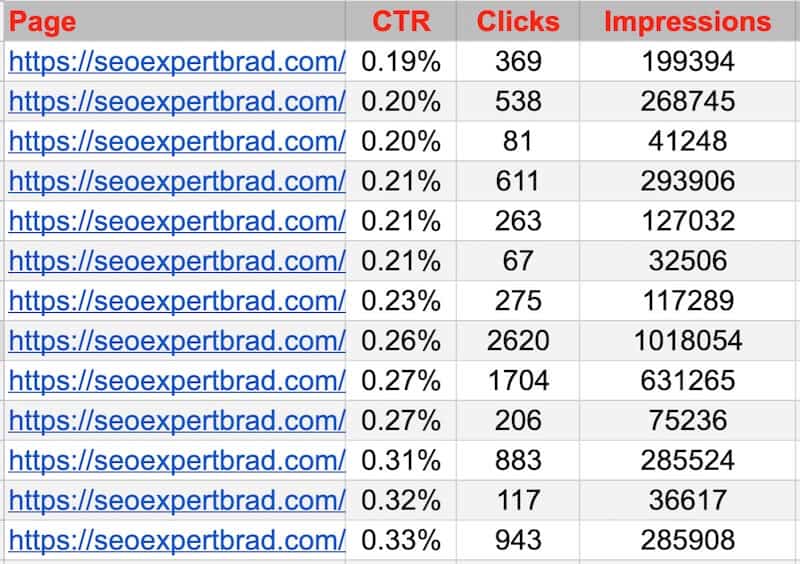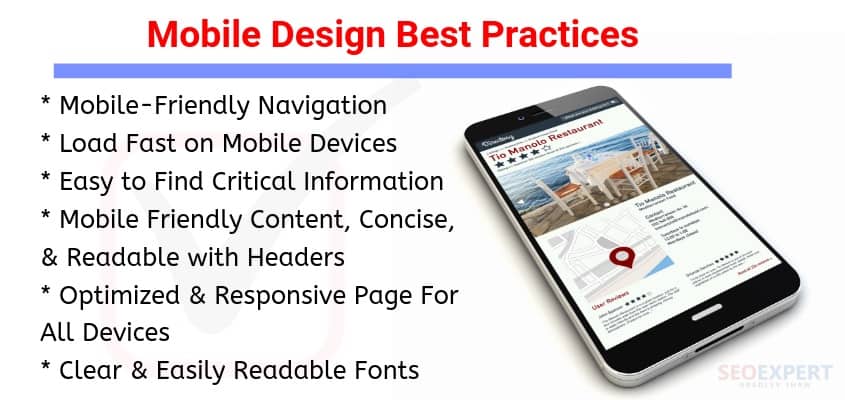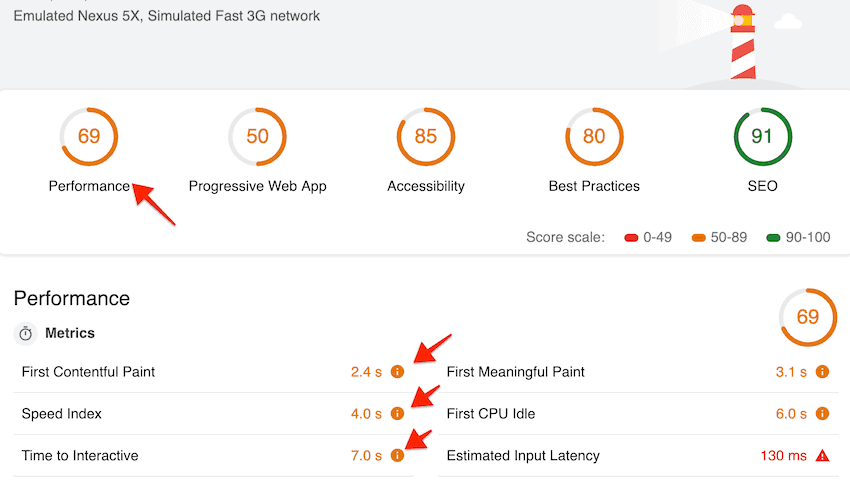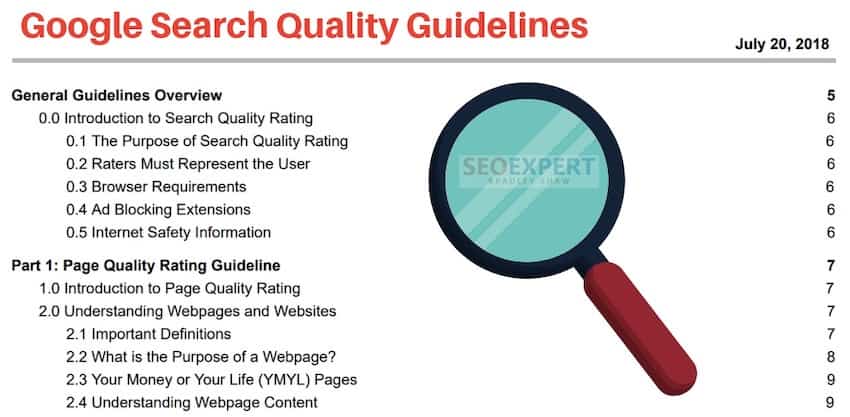I get asked daily “What is the latest Google ranking factor I should be focusing on?”
My simple answer is to build the best website that serves your users. After all, Google wants users to be satisfied and return to its Google to conduct more searches.
But, let’s dive deeper.
While there is a long list of over 200 Google ranking factors you could focus on, I have chosen 13 important signals to prioritize in 2019.
I’ve narrowed down my list to tactics that should be a part of your SEO strategy, in no particular order
13 Quick SEO Takeaways From This Article:
- Updated High-Quality Content, Freshness Matters. Have a Fluid Strategy.
- Clean Crawlable Code. What Google Can’t See, It Can’t Rank
- Authority + Trust = Expertise
- Understand Keyword Search Intent. Mess This Up, and You Have No Chance From The Start.
- User Signals Will Matter, If They Don’t Already
- Optimize for Click Thru Rate In the SERPS
- Links are Still Critical, But the Right Kind Of Links
- Optimize For Voice Search
- Be Mobile First, Mobile Friendly, Compatible With All Devices
- Website Speed For The User & Google
- Provide a Great Overall User Experience, Internal Linking + Navigation
- Add Structured Data To Increase Google’s Ability To Understand Your Website
- Read & Understand The Google Quality Rater Guideline
Below is an example from a client of mine. This is one single article in a highly competitive area, think $50+ PPC. As of today, this article has a “value” of over $65,000 a month and traffic and leads continue to grow.
Still wonder why a fluid SEO strategy is critical? Keep reading and find out.
My Top 13 Ranking Signals That REALLY Matter in 2019
1. Fresh, Quality Updated Content
One of Google’s core philosophies is to provide its users with the highest quality and most relevant content for whatever they happen to be searching for.
Make sure you consistently, produce new and valuable content.
Content must provide real value to the user and should incorporate engaging visual content.
- In-Depth articles to get on Google’s radar.
- Provide real value to your readers.
- Answer any questions that they may have
- Solve targeted problems and give real solutions that make their life easy.
- Create a resource and give them a reason to share/link to you.
If you regularly offer unique content to your audience, you can expect more visitors and those all-important backlinks. It has to be unique, though.
2. Clean Crawlable Code =Rendering + Better Crawl Rate
One of the most neglected aspects of search engine optimization is the code of your website. You may think that your site looks beautiful from the outside, but you also need to have clean code for optimal SEO results.
The reality is if Google cannot render your websites coding, your content may be ignored.

Example of potential page loading issues, check the HTML to verify Google is rendering your content.
Everything starts with understanding how Google reads your website.
The search engine spider or bot crawls your site. This bot reads your website code. It runs through your code from top to bottom. This means that if you have a lot of code that doesn’t have anything to do with the content of your page, the essential elements may not be seen as a priority.
Too much code and poorly formatted code also tends to slow down the loading speed of a page. This is significant because loading speed is a Google SEO ranking factor. Using bulky themes, redundant code or unorganized code can have a negative impact on your rankings.
There are many ways to go about addressing this issue. Working with a developer who understands SEO will result in better use of CSS and HTML code. Using speed optimization tactics like minifying your HTML and getting rid of unnecessary scripts can make a difference in your search engine rankings.
So make sure you take the code of your website seriously. Be critical of your code if you design and develop your site yourself. Work with your designer/developer about this potential problem. It’ll go a long way in accomplishing your SEO goals.
3. You + Your Site Needs to Be an Authority
Being an authority in your industry is a huge advantage. It’s essential to demonstrate authority in your area of expertise to Google and your audience.
After all, you know more about your business than anyone.
If your site isn’t an authority online, you’re missing out on a significant Google ranking factor – one that is a force-multiplier for traffic.
Greater authority means greater conversions, too.
After all, from whom would you instead buy from: someone you’ve never heard of or someone who’s a recognized authority in your industry?
Notice how I included an example of a clients growth from a single article early in this post. That was a way small to tactic authority with people who may not know me.
Establish yourself as an Authority:
Why do I rank #1 for SEO Expert? Simple. I have been quoted in 100’s of publications and referred to as a Google SEO Expert. There are many ways to establish yourself as a thought leader: digital PR, social media, or publishing killer content that people share. But, they will only share your content if they “trust” you.
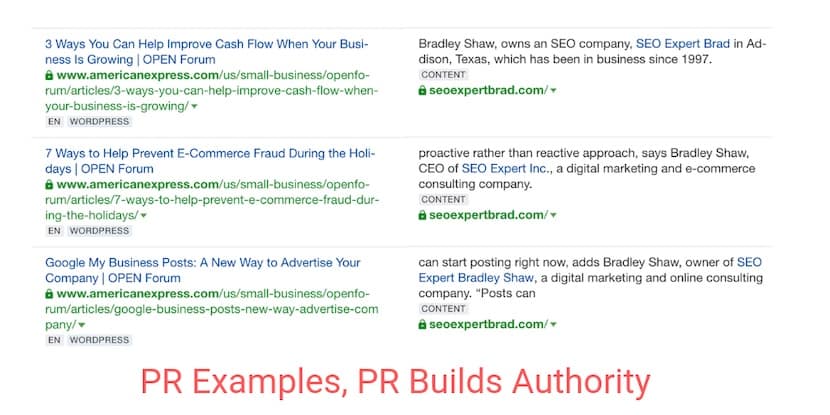
Connect With Other Influencers: Don’t just publish this content on your own site, though. You also want to look for opportunities to post content on other websites. Note, I am not talking garbage guest posts here.
There are two reasons for this. The first is that you have an opportunity for a backlink. The second reason is that it improves your profile as an authority. Why else would another company let you publish content on their site? It makes sense that it’s because they want to share your valuable knowledge with their visitors if you ADD value.
4. Understanding Keyword Search Intent
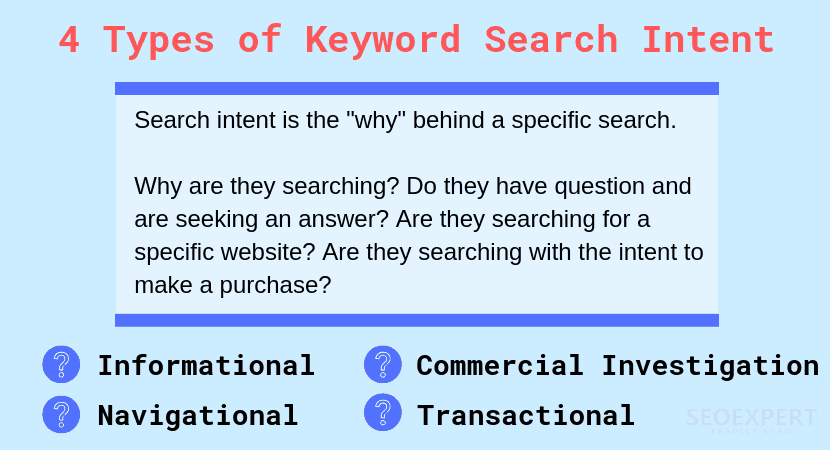
With the machine learning component of the Google algorithm, RankBrain, Google to determines the intent of the search term to best match the user’s query.
When conducting keyword research, it’s crucial that you understand what search intent is.
The most basic way to define search intent is to look at the purpose behind the search query.
There are four main types of keyword intent:
1. Resource / Informational Intent – searches made to gather information (questions, how to, guides, checklists, etc.)
2. To Investigate – searches made to research and (best digital cameras of the year, top-rated gaming PCs, healthiest protein bars, etc.)
3. Buyer / Transactional Intent – searches made to (product reviews, product comparisons, coupons, best prices, etc.)
4. Navigational – The user is looking to find a particular website.
Each of these categories informs us about the searcher and provides clues on how a business should act upon it.
By understanding the intent, you can better target your website to capture the right audience. Create content optimized for the users’ needs.
5. User Signals & Behavior as a Google Ranking Factor
To be fair, this may not be a direct Google ranking factor, yet. Controversial topic.
Take a look at the SemRUSH research on ranking factors and notice bounce rate, time on site, and pages per session near the top.
Google has even denied user signals play a role in their algorithm.
However, there’s compelling evidence that this may not necessarily be true. Even if Google is telling the truth, there’s no reason not to optimize things like time-on-site and bounce rate.
Doing so would show Google that visitors love your website, but, if nothing else, it should directly lead to more conversions.
Dwell Time: Focus on ways to get visitors to stay on your site longer. Engage quickly, or as I like to say, hook them and leave them wanting more.
Bounce Rate: When a user quickly leaves your website after conducting a search, that is a bounce. Bounce rate is calculated by the percentage of your total website visitors who leave the site after viewing only one page.
Use Google Analytic to identify pages on your site with a high bounce rate.
Reduce your bounce rate by:
- Improve your content’s readability; make it easy to read and scannable.
- Optimize internal linking & add Suggested Content
- Add video or other interactive content.
- External links should open in a new window.
- Avoid Popups that disrupt the user experience
6. CTR or Click Thru Rate in the SERPS
Optimizing for click-through rate (CTR) is a QUICK WIN to drive more traffic.
Clickthrough rate is calculated using the number of searchers that click through to your site after viewing search results.
This looks at how many people click through to your site compared to how many times your site shows up for a particular keyword search.
In Google Search Console head to Search Analytics. Check the box marked CTR and the average CTR for your keywords will appear. You can also view CTR by page, or by query.
If you find that you have an extremely low CTR, you should look at that particular pages title and meta description as it displays SERPs for targeted queries.
Start by optimizing the two most important parts of your site’s search engine result:
- Title Tag optimization
- Meta Description (text under title tag)
Improve title tags and meta descriptions to make them “clickable”. Work to improve the attractiveness to users.

Example Title and Meta Tags
7. BackLinks Still Matter, Relevant and Fresh
Links pointing back to your site has long been a critical metric Google looks at to determine authority.
Link relevancy is key.
Google wants to see links from other relevant high authority sites with real user engagement and quality content. The number of different linking domains, their authority and how many other external links they carry will all weigh into the weight passed on to your site.
Focus on what I call organic or natural links. If I can look at a backlink profile and identify irregularities, imagine what Google’s machine learning, AI, and algorithms can do.
Natural anchor text used to link to your site is essential as well. You want to be careful not to have a high percentage of keyword rich anchor texts compared to links with your domain directly listed. This is a flag for Google on possible link spam.
8. Voice Search Optimization
Voice search stats show that by 2020 50 percent of all searches will be done by voice.
People will use voice-enabled devices, like Google Home, to complete at least 30 percent of all searches without using a screen.
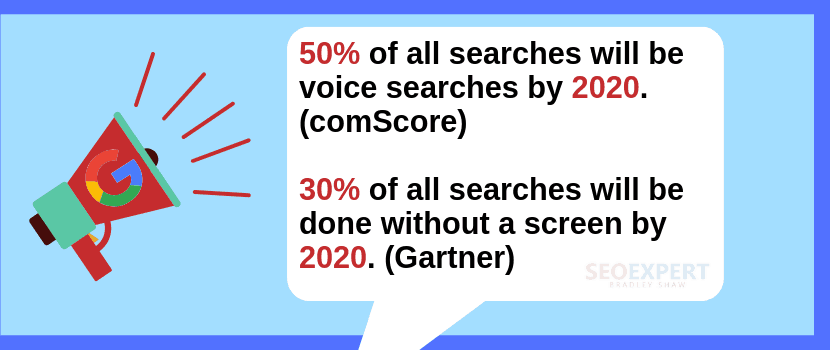
Voice searches tend to be longer than searches entered via a keyboard. Therefore, to optimize for voice search you must concentrate on finding and using keywords that people are apt to use in conversations. These keywords often contain a question.
Your questions should be divided to lead the searcher through the sales funnel:
- What questions – These consumers are at the widest part of the funnel and looking to find out more general information.
- How questions – Customers asking these questions are ready to find out more specific details about a product or service.
- When questions– Aligning with the closing, customers asking these questions are looking at their options.
- Where- Consumers asking these questions are ready to buy, and they want to know if you have their product in stock.
9. UX: Offer Users the Best Possible Experience
Providing a quality user experience is critical to organic search rankings
Having a fast site may get you more traffic, but that traffic will be quick to leave if your site becomes more of an obstacle than a solution.
Google knows this, which is why UX is just as important as SEO. Show your visitors easy navigation and Google will reward you.
Scannable Headers:
Think how difficult newspapers and magazines would be to read if they didn’t have clear headers that organized all of the information and made it easy to tell where to find the content you wanted.
This is what it often feels like for those who visit websites that lack lots of informative headers. Your visitors should be able to scan your page and quickly realize what the content entails.
That’s a good start, but don’t forget about Google. To show their algorithm your headings, use h1, h2, and h3 tags. It’s a simple step, but it will go a long way toward improving your search results.
Internal Linking:
Whenever you publish a new post, link to an old one, or a few. It helps your visitors explore new areas of your site, and it allows Google’s crawlers to index your entire site. This will also decrease the bounce rate, which shows Google that visitors who come to your site are happy with what they find.
Intuitive Navigation:
Every page needs to be easy to navigate. A good rule of thumb is that “simple beats fancy.” Get rid of popups, shorten your list of options, and ditch any complicated menus that stand between your visitors and the rest of your site.
Once again, there’s a Google ranking component to consider with this, as well. If your site design is clean and well-organized, Google may pull your site links into their SERPs.
Here’s how they decide which to show and which to ignore according to Jon Mueller:
“We only show sitelinks for results when we think they’ll be useful to the user. If the structure of your site doesn’t allow our algorithms to find good sitelinks, or we don’t think that the sitelinks for your site are relevant for the user’s query, we won’t show them.”
10. Mobile-Friendly Is Google-Friendly is User-Friendly
One element of UX is so important that I want to give it its own section. If you neglect this Google ranking factor, your site may be all-but-invisible to searchers in 2019.
There’s a good chance you’re reading this on a mobile device. But even if you’re not, it’s a near impossibility that you haven’t visited a website on either your phone or tablet today.
Back in 2016, mobile Internet usage overtook desktop for the first time. Although ensuring your website is mobile-friendly had already been an important Google ranking, it has now become an absolute essential. By having a site that is not dynamic and optimized for mobile devices, you’re automatically providing an inferior experience to more than half of your visitors.
Google is moving to mobile indexing, ranking based on the mobile version of a website.
In other words, even if you think that your market never touches a mobile device, your ranking for desktop users will still suffer if your site isn’t mobile-friendly.
This is why accommodating mobile-users has become one of the most important Google ranking factors.
Google even offers a simple way to check and confirm your site is mobile-friendly. Just go to the Google Search Console and choose “Search Traffic” and then “Mobile Usability.”
You can also check your URL into Google’s Mobile-Friendly Test.
11. Speed: Make Sure Your Website Doesn’t Keep Users Waiting
No one likes to wait.
Whether at the DMV, your local dentist, or a restaurant, we all want what we came for ASAP.
When it comes to websites, people don’t like waiting. This is why the speed at which your website loads has become a major Google ranking factor.
The fastest page usually wins with Google.
While there’s some debate about how fast your website needs to load, the consensus is that it should be a matter of seconds, under 3, or 2.
In fact, almost half of your visitors will leave if they have to wait just two seconds for your page to load. The faster, the better.
If you haven’t checked your website’s load time recently – or at all – now is the time. Fortunately, there are plenty of tools for measuring your load time.
So, for a quick climb up Google’s SERPs, focus on speed. TTFP, which stands for time to first byte is a great place to start.
Example Page Speed Report from Google Lighthouse
12. Use Structured Data
Structured Data helps search engines better determine what your page is about.
Start by using Schema Markup on every web page. This simple open-source code helps them understand the purpose of the page.
“When we look at the overall click results across all three scenarios, we see that the rich-media‒ enhanced result in position 2 captures an average of 61% of clicks, versus 48% when the same unenhanced result is in position 1… In our research, users tell us loud and clear that they would sooner click further down the page on a search result enhanced with appealing rich media than on position 1 containing a plain, text-only link.” – Blue Nile
Structured data is becoming increasingly important in SEO. Structured data is simply data that’s given a structure. In context to SEO, the data that can be organized include anything from business information, category pages, product listings, user ratings, to even recipes. This data is attached to your website’s search engine listing which offers better guidance to users.
Schema is the implementation of structured data. The search engines (Google, Bing, Yahoo) have all agreed on the coding that can be used to execute the structured data. The list can be found in Schema.org. The site lists a wide variety of schema that can be used.
Structured data and schema is not a ranking factor in that merely using it will improve your rankings. However, using it will improve your targeting. The search engines, notably Google, will have an easier time understanding what your website and the pages within it are about. In that way, you can say it indirectly helps with your search engine ranking.
But one thing that people don’t look at when using structured data and schema is clickthrough rates (CTR). Google is always focusing on providing the best results for their users. The more your website listing is clicked on after a search query is made, the more you are communicating that your listing is relevant and valuable to the user’s search.
And with Google integrating machine learning into their search results, this could mean that your listing for specific search queries and pages may start showing up more often. After all, the machine learning algorithm is designed to provide the user with optimal results. Even if the impact of CTR on rankings is minuscule, using structured data and schema effectively can lead to higher lead and sales conversion rates.
The bottom line is that structured data and schema gives you an advantage over competitors that aren’t using it. If you want to succeed with SEO in 2019, you want to put a heavy emphasis on implementing it for your website.
13. Consider Google’s Own Quality Rater Guidelines
Finally, arguably the easiest way to improve your Google ranking is to look at their actual guide for doing so.
Returning to the topic of content, Google’s John Mueller recommends you check out their quality rater guidelines for help creating the best posts possible.
Now, while this may seem easy enough, the Google Quality Rater guidelines are 164 pages long. Fortunately, it’s very heavy on images and illustrations, so you should be able to get through the entire thing in one sitting.
Once you do, you’ll have a much better understanding of all Google ranking factors and how they relate to one another. You’ll be able to see through the search engine’s eyes, which should make it much easier to decide what’s best for your site going forward.
Among many other things, here are some of the topics the guide covers in detail:
- Summary of the Parts of the Page
- Characteristics of High-Quality Pages
- Examples of High-Quality Pages
- Pages that Potentially Deceive Users
- Specificity of Queries and Landing Pages
Again, just reading it once will help you understand Google ranking factors better, but it will also make a great reference document in the future. I suggest you download this PDF, too, as Google has removed it once before.
Time is Now to Act: Google Search Engine Ranking Factors
Following these guidelines will help your website rank higher in 2019.
Recent Google is paving the way for sites with quality content that provides real value for users. Google is measuring how users interact with your content.
Start by building great content, focusing on user experience, and remember that links will always matter.
By finding out about the most important Google ranking factors are for 2019, you’ve taken a big step toward improving your website and seeing more traffic than ever before.
But you still have work to do.
I encourage you to take the time to implement the changes you need to make, so your website is well optimized.
You can start small – checking your site’s speed or reading the quality guidelines – but be sure you make it through the entire list.


